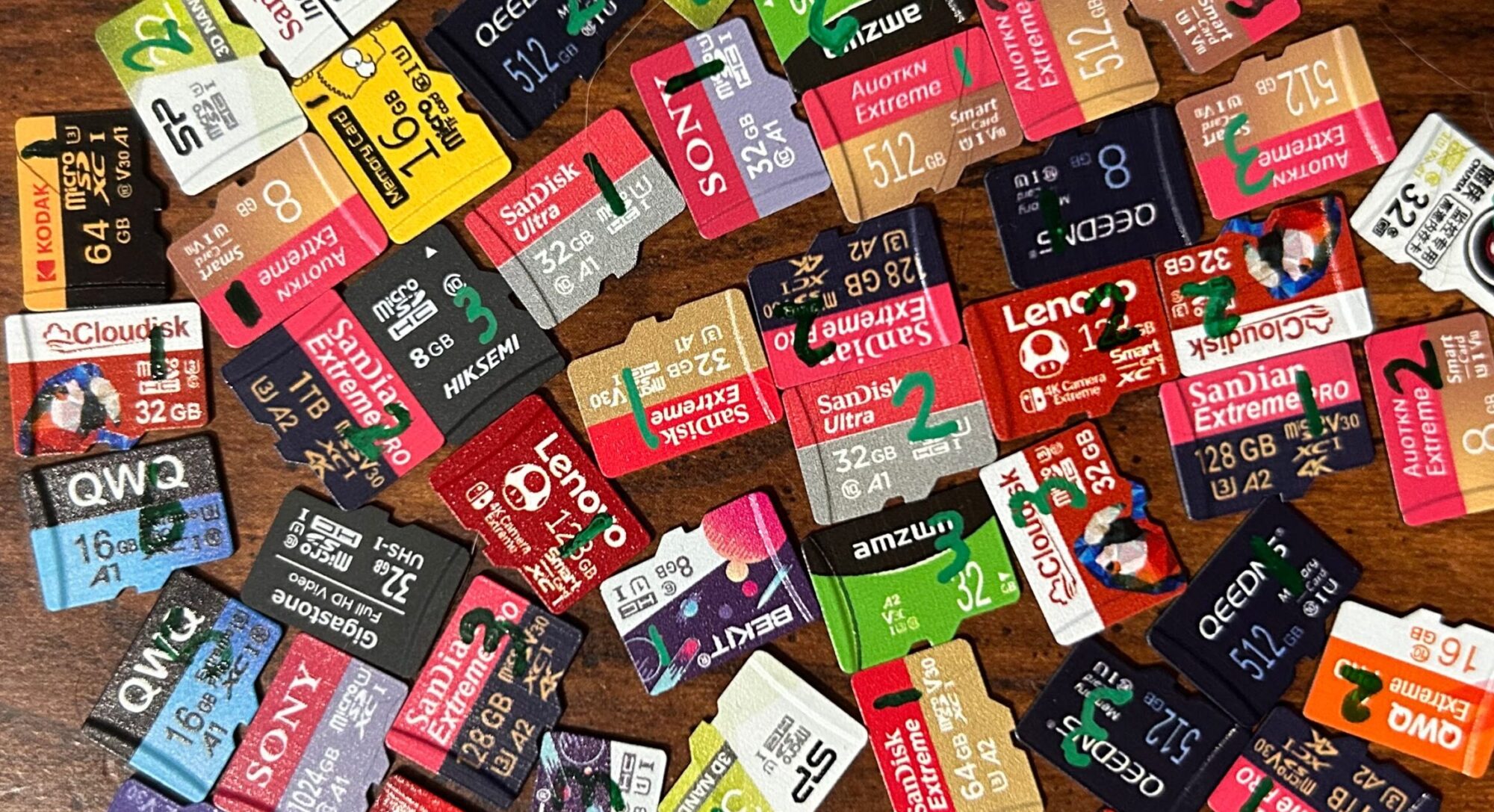onn. is a private label sold by Walmart. I spotted this particular card while walking around a Walmart store one day and, on a whim, decided to pick up a few to test.
Once I opened the package and saw the back side of the card, it was immediately apparent to me that these cards were sourced from PNY: no one else (that I’ve come across, at least) stamps “Made in Taiwan” the back of their cards the way that PNY does. I’ve seen other cards that have it laser-etched, but I haven’t seen anyone else that stamps it on. The CID data indicates that the cards were manufactured by Phison — which lines up with the other PNY cards I’ve tested.
Performance is about what I would expect from a private label brand like this — not great, but also not the worst I’ve seen. Sequential read and write speeds were close to average; random read and write speeds were below average.
On the endurance testing front:
- Sample #1’s first error was a series of bit flips, across 2 contiguous sectors, during round 1,775. It kept going for only about another 100 read/write cycles before it had enough and stopped responding to commands altogether. By that point, only about 0.4% of the card’s sectors had been flagged as “bad”.
Sample #2’s first error was a series of bit flips, across 8 non-contiguous sectors, during round 833. The number of failed sectors increased quickly over the following rounds, taking less than 1,000 read/write cycles to reach the 50% failure threshold. Here’s the graph of this card’s progression:
Sample #3’s first error was a series of bit flips, across 454 non-contiguous sectors, during round 1,496. Starting not long after — at around round 1,502 — the number of bad sectors started to accelerate. During round 1,696, the card began to experience a high number of I/O errors; however, unlike some other cards I’ve tested, this one actually managed to snap out of it and keep going. However, the bad sector count only continued to increase: by the time it got finished with round 1,726, the number of bad sectors had passed the 50% error threshold. Here’s the graph of this card’s progression:
Sample #4’s first error was a series of bit flips, across 2 adjacent sectors, during round 818. Like sample #2, the number of failed sectors increased quickly over the following rounds — just barely making it past the 1,000 read/write cycle mark before failing. Curiously, however, it did not reach the 50% failure threshold — it experienced a corrupted CSD failure, leading the reader to believe that it was only 250MB in size. This happened after about 36% of the card’s sectors had been flagged as “bad”. However, since it got close, I’ll show the graph of this card’s progression through the endurance test:
This is a curious result for a Phison-produced card — in fact, it’s the worst result of any Phison-produced card I’ve tested so far. The way in which samples #2, #3, and #4 failed is pretty similar to other low-quality flash cards that I’ve tested — and thus far, Phison hasn’t been known for putting out low-quality flash. As of the time of this writing, the average Phison-produced card has survived about 6,800 read/write cycles — and these cards lasted less than 30% of that. In my mind, this puts a stain on Phison’s reputation as a manufacturer. I guess this means that anyone is capable of putting out low-quality flash.
So let’s review: sequential I/O speeds were only OK at best, random I/O speeds were poor, and endurance was pretty poor. Skimp is also pretty high (for a non-fake flash card). On the upside, price per gigabyte is below average…but it got outperformed in pretty much every aspect (price per gigabyte included) by the Lexar Blue 633x 32GB. Given all this, my verdict is “don’t buy these — they’re garbage”.
June 19, 2025 (current number of read/write cycles updates automatically every hour)
